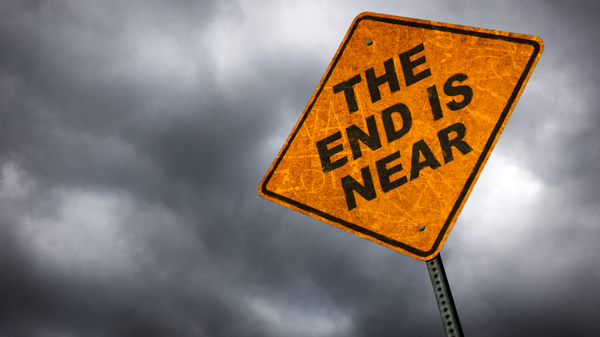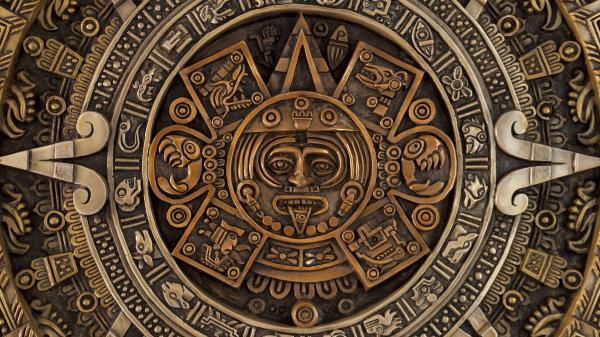The Best Apocalypses in History
The end of the world is near—again! For centuries, doomsdayers have prophesied the apocalypse. But there's a tiny catch: None of the end-of-world predictions ever come true.

There have been hundreds of doomsday prophecies through the ages, but none have ever come true.
©iStockphoto.com/DNY59
Every year, new apocalyptic predictions waft through the dark fringes of the internet and the tabloid media. In the past couple of years, the world was predicted to end in a supervolcano eruption, an asteroid impact, and a new ice age, to name just a few of the more popular doomsday prophecies.
Needless to say, none of them have come true.
Of course, the current global security situation is worrying. But especially in such a climate of uncertainty, the last thing we need is more armageddon fantasies to ramp up our anxiety. At the end of the day, despite all of the recent heartbreak, humankind is still around, and thriving!
3 surprising facts about New Year’s 2025
The Best Doomsday Predictions That Fizzled
As an antidote to the doom and gloom those wannabe-prophets keep spreading, have a look at some of the more notorious doomsday scenarios in history that failed to materialize, just like hundreds of other prophecies through the ages.
While some of the listed events had tragic consequences for many involved, a look at the track record of prophets and prophecies is a good reminder that there is no need to panic.
After all, predicting the end of days is a tricky business.

The Mayan calendar got some people worried in 2012.
©iStockphoto.com/luisrsphoto
The Mayan Calendar
The end of the world was predicted to occur on December 21, 2012, when one of the great cycles in the Mayan calendar came to an end.
In the run-up to the day, the internet abounded with predictions about an apocalypse happening on “12/21/12”.
Faced with the wealth of alarmist information available on the World Wide Web, even NASA was compelled to publish an information page about why the world would not end on December 21, 2012.
See our countdown to the end of the Mayan calendar
Camping and the Rapture
The world was also supposed to end on October 21, 2011. American radio host Harold Camping had arrived at the date for the apocalypse through a series of calculations that he claimed were based on Jewish feast days and the lunar calendar.
In addition to his claims about the end of the world, he also predicted that on May 21, 2011, at precisely 6:00 pm, God’s selected people would be assumed into heaven, in an event he called the Rapture.
Those who were not raptured, he said, would have to remain on Earth to wait for their doom five months later.
According to media reports, some of his followers quit their jobs, sold their homes, and invested large amounts of money in publicizing Camping’s predictions.
When the Rapture did not occur, Camping re-evaluated his predictions saying that the event would take place simultaneously with the end of the world. After October 21, 2011, the self-proclaimed prophet stated that “nobody could know exactly when the time of the apocalypse would come.”
See how much time has passed since Camping’s apocalypse
The Black Hole from Geneva
Scientists use the Large Hadron Collider (LHC) near Geneva, Switzerland, to set up controlled collisions of particles at very high speeds.
The experiments have caused some to believe that the energies set free by the collisions will form a black hole powerful enough to consume Earth and all life on it.
No such black hole has been sighted yet, and several high-profile studies have concluded that no such dangers are associated with the experiments conducted at the LHC.

Detail of the Large Hadron Collider at CERN in Geneva, Switzerland.
©iStockphoto.com/xenotar
Y2K and the Millennium Bug
Toward the end of the second millennium, people around the world feared that the world would end simultaneously with the beginning of the year 2000, or Y2K.
This prediction was based on the practice followed by computer programmers of abbreviating year numbers with two digits when developing software. For instance, “1999” would be coded as “99.”
At the turn of the century, computers would revert to “00,” assuming that the date was 1900 instead of 2000, leading to software errors.
According to popular belief, this so-called “Millennium Bug” threatened banking systems, planes, and even the safety of weapon systems, leading to all-consuming chaos on planet Earth.
However, at midnight on January 1, 2000, the world celebrated the new year, and no planes dropped out of the sky.
Did the third millennium begin in 2000 or 2001?
See how much time has passed since Y2K
Nostradamus and the King of Terror
Renowned seer Nostradamus prophesied 250 years ago that a “king of terror” would come from the sky in 1999.
Austrian geologist and Nostradamus buff Alexander Tollmann decided to play it safe by sitting it out in a self-built bunker in Austria. Tollmann was convinced that the apocalypse was to come early in August, a fear that was consolidated by the total solar eclipse on August 11, 1999.

Solar eclipses are really nothing to worry about—as long as you use proper eye protection.
©iStockphoto.com/LeoPatrizi
The Great Flood and the Flying Saucer
Chicago housewife Dorothy Martin (a.k.a. Marion Keech) claimed to have received a message from planet Clarion in the early 1950s: the world was to end in a great flood before dawn on December 21, 1954.
Martin and a group of followers were convinced that a flying saucer would rescue the true believers before the inevitable destruction of Earth.
The belief was so strong that some broke completely with their previous lives, quitting their jobs, leaving their spouses, and giving away money and possessions.
Social psychologists Leon Festinger, Henry Riecken, and Stanley Schachter infiltrated Martin’s group to study the effects of such convictions and the group’s reactions when the prophesied event did not occur. Their work, When Prophecy Fails, delivers the first instance of Festinger’s noted theory of cognitive dissonance.